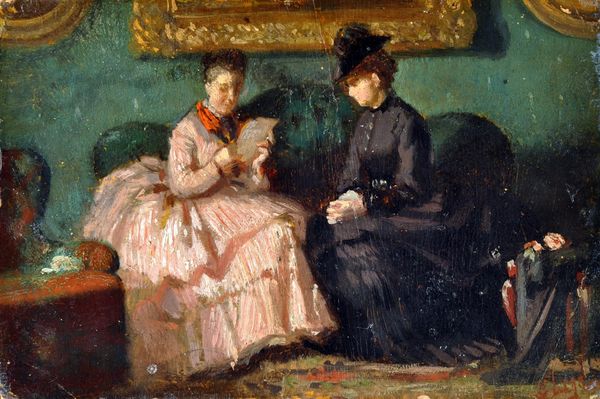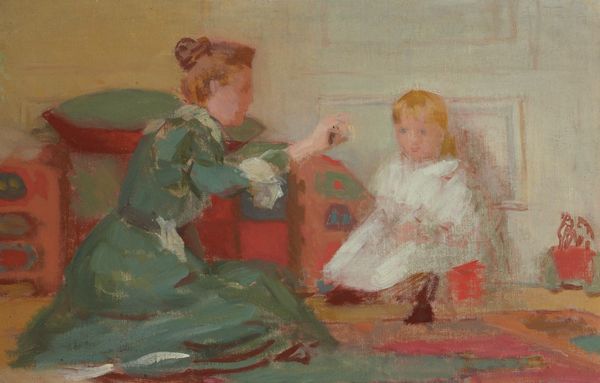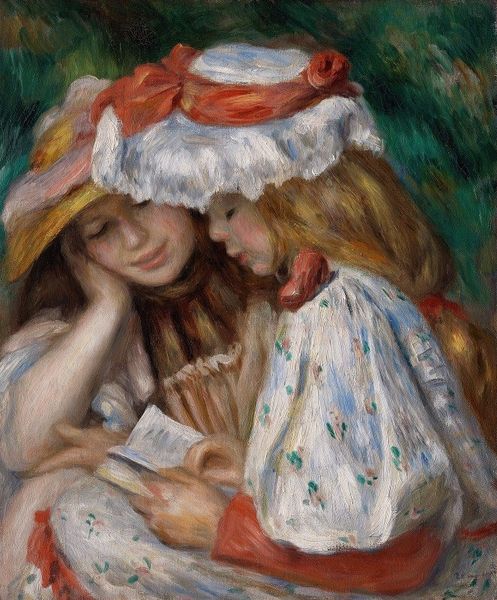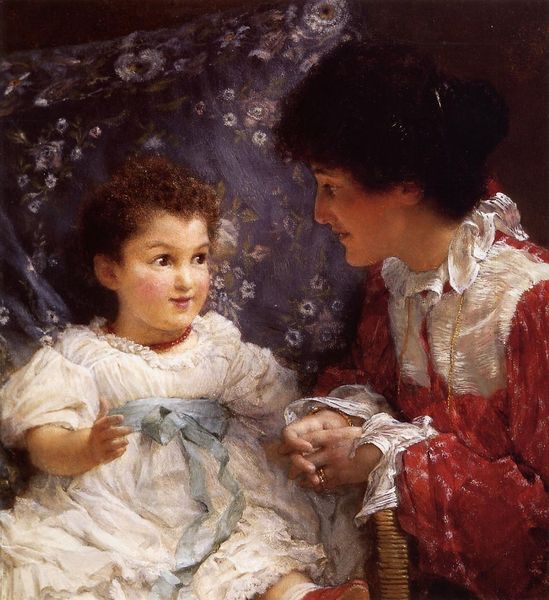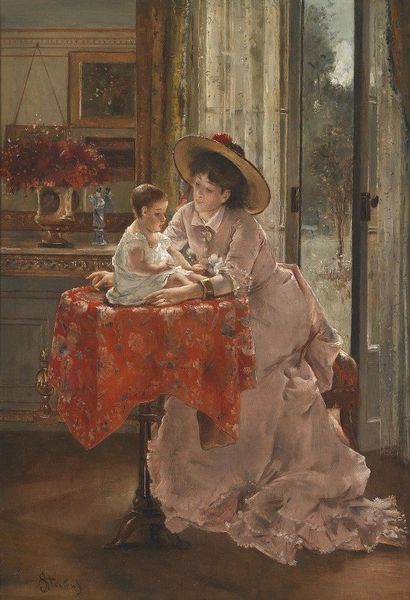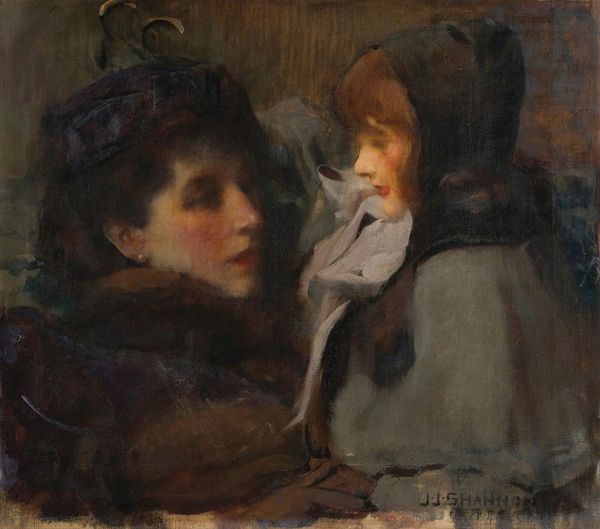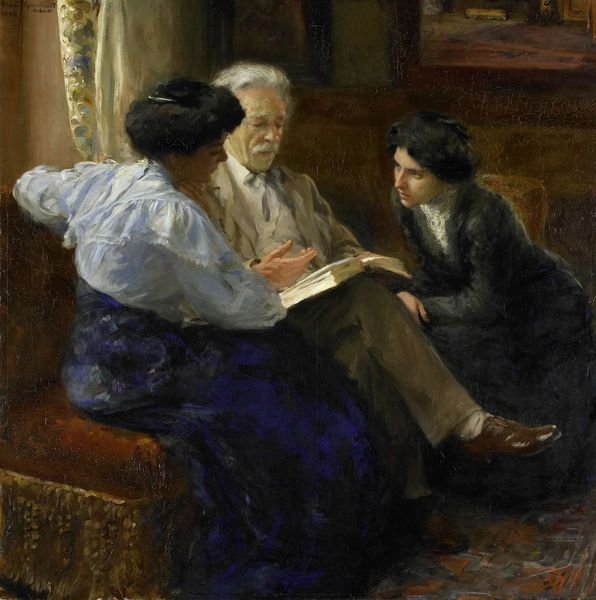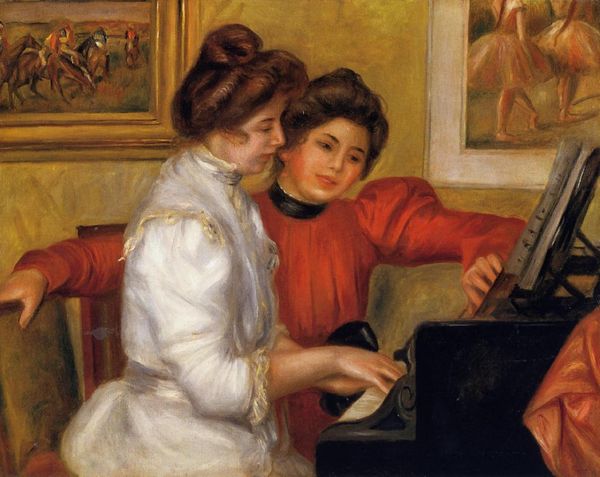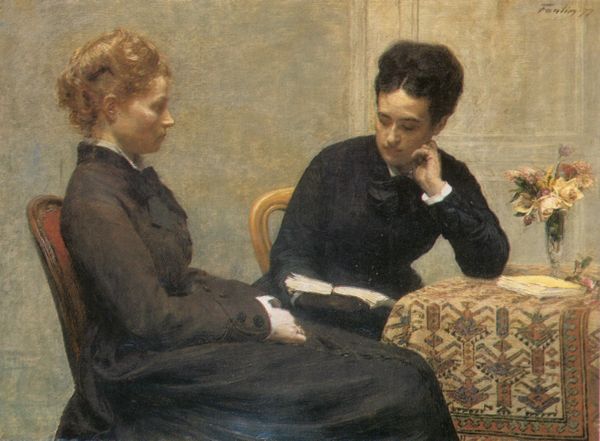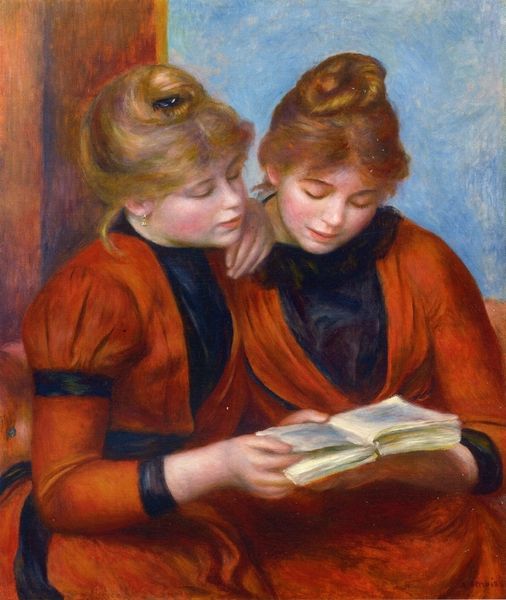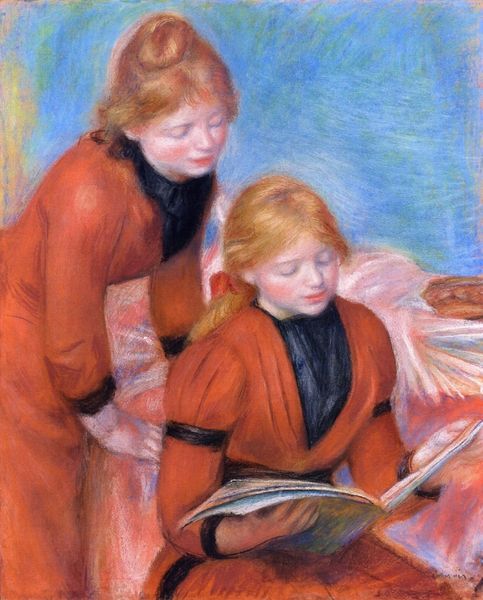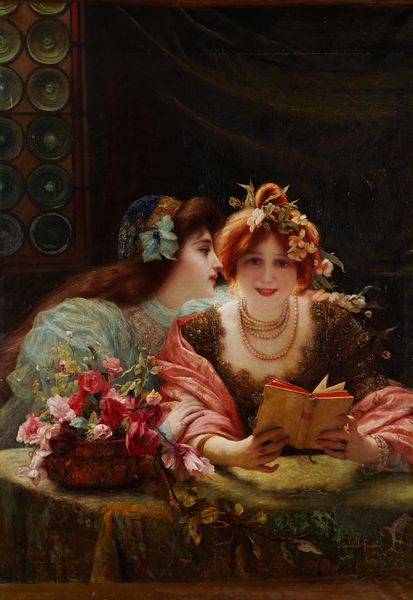
Copyright: Public Domain: Artvee
Curator: What strikes me first is the mood; the figures seem so self-contained. Editor: Indeed, there’s a certain intimacy—a private world unfolding. We're looking at "The Letter" by Pierre-Auguste Renoir, painted around 1895 to 1900 using oil paints. I notice how Renoir represents the materiality of leisure through objects and dresses. Curator: The presence of a letter here immediately raises questions of what message it contains and the hidden meanings behind what's being read or written. The objects like the inkwell and paper take on significant symbolic weight in capturing fleeting moments and emotions, something so important in Impressionism. Editor: Precisely! But consider the sheer craft, Curator. Look at the textures rendered through layers of paint. You see it especially in the dresses, almost dissolving at the edges. How much these garments point to economic privilege, as material markers of social status. Curator: Definitely. Clothes function as an extension of identity here, signaling taste and wealth as much as personal style, wouldn't you agree? And if we see clothes as forms of non-verbal language, then this scene expands into complex readings and layers. What cultural narratives are present, subtly encoded, in such images of reading or writing? Editor: The question is fascinating, particularly considering that Renoir had assistance completing several pieces from the mid 1880's until his death. What did his studio assistants do, and how did that labor structure impact the reading of his painting as an act of communication, like letter writing? Curator: Oh that throws everything into fascinating question of the artist’s intent. Knowing that the paintings involved external labor opens doors to look into collaborative art creation during that time period and their socio-economic implications. I guess Renoir wasn't alone at his desk. Editor: That makes me see the image differently! Renoir's works give us a peek not only into the beautiful appearances and social codes of his time but also the mechanics and economies underlying those visions. Curator: I agree, an insight not just into the symbols, but into the labor of creation. Editor: Definitely more than initially met the eye.
Comments
No comments
Be the first to comment and join the conversation on the ultimate creative platform.
